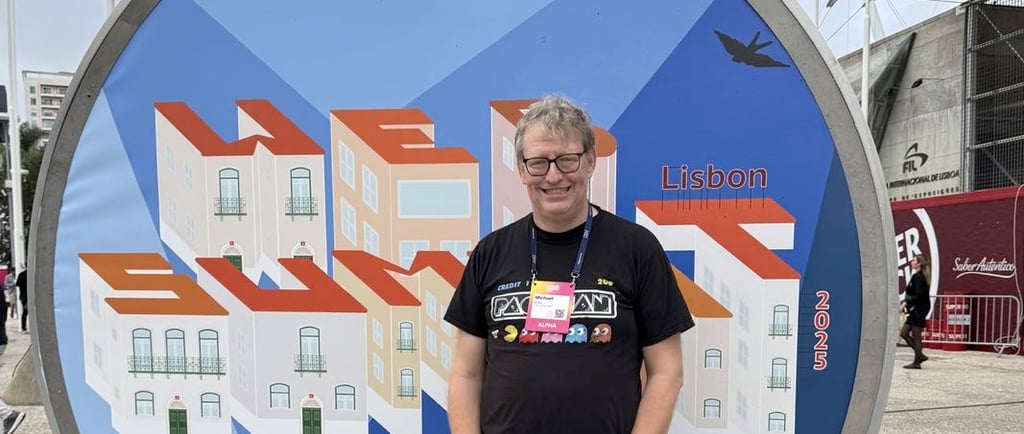Web Summit 2025: Reflections from Lisbon’s Global Stage
What began as a modest 150-person gathering in Dublin back in 2009, has become one of the most influential technology conferences on the planet with more than 70,000 attendees . Web Summit has grown so large that it now supports an entire parallel ecosystem of more than 200 side events—mini-conferences, meetups, investor dinners, and founder gatherings that stretch late into the night across Lisbon’s neighbourhoods.


Each November, Lisbon transforms into the beating heart of Europe’s tech world, and Web Summit 2025 carries that mantle with its usual spectacle and force. What began as a modest 150-person gathering in Dublin back in 2009, has become one of the most influential technology conferences on the planet. Over the years, Web Summit has welcomed more than a million entrepreneurs, innovators, and investors. Today, it’s no longer just a single event—it’s an international family that spans Web Summit Lisbon, Web Summit Rio, Web Summit Qatar, Web Summit Vancouver, and RISE in Asia.
But Lisbon remains the flagship, and in 2025 it was as vibrant as ever. More than 70,000 attendees descended on the MEO Arena and the Lisbon Exhibition and Conference Centre, producing a kind of controlled chaos that only the global tech community can generate. For four days, the city felt like the center of the innovation universe—so much so that even the President of Portugal, Marcelo Rebelo de Sousa, joined the pre-event festivities.
The energy didn’t stop at the main venue. Web Summit has grown so large that it now supports an entire parallel ecosystem of more than 200 side events—mini-conferences, meetups, investor dinners, and founder gatherings that stretch late into the night across Lisbon’s neighborhoods. It's not unusual for other conferences to schedule themselves immediately before or after Web Summit, just to catch the overflow of global attention.
For Mike Blake, CEO of High Score Strategies, the experience was equal parts exhilarating and instructive. This year he spoke on a SaaS and AI valuation panel at a side event by Yorkseed Capital. The attendance alone, over forty engaged founders, investors, and operators, demonstrated how much valuable conversation takes place outside the main campus.
Still, even a seasoned professional can feel a bit awestruck. “The first night, I wandered around with my mouth agape,” Mike recalled. He learned a valuable lesson for next year, at a conference this size, the trick is not just showing up, it’s planning. “I could have scheduled more meetings in advance. The tools are there; I just didn’t leverage them well enough.” He also found that business cards are relics. “A physical card now makes you look like an Atari 2600 at an esports event.” QR exchanges via LinkedIn or WhatsApp ruled the day.
Web Summit also provided a snapshot of global tech’s shifting geography. Polish exhibitors were everywhere, signaling a rising Central European tech wave. Ukrainian founders showed up in force, demonstrating an entrepreneurial resilience reminiscent of Israel’s ability to innovate under pressure.
Portugal, true to form, kept the mornings humane. The official schedule rarely ramped up before 10 a.m., a quiet acknowledgment that the real action often runs deep into the night.
When the dust settled, Mike viewed the week not just as enjoyable but as “immensely useful.” The event distilled a global tech community into a single city, one where ideas collide, partnerships form, and the future of industries comes into sharper focus.
And while Web Summit has since grown into a worldwide series, with Rio, Qatar, Vancouver, and RISE extending its presence across continents, Lisbon remains its spiritual home. It’s where the energy feels most concentrated, where global tech feels closest together.
Mike’s conclusion was simple and decisive, he’s already planning for Web Summit 2026. How about you?
